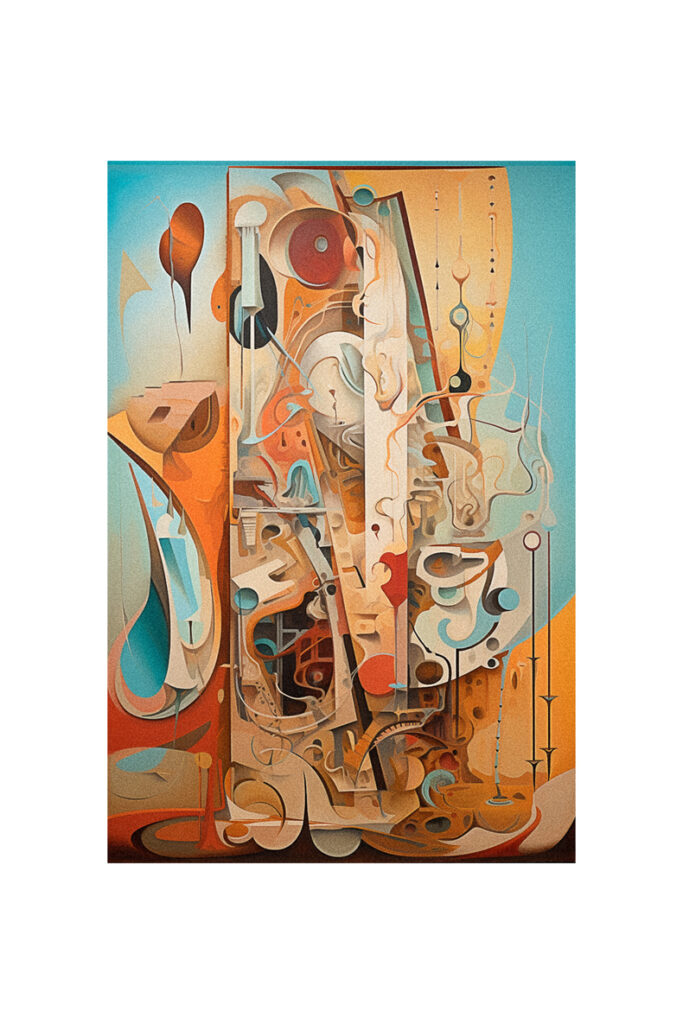From the rudimentary cave paintings of prehistoric humans to the innovative fusion of technology and traditional methods in contemporary art, painting has persistently transformed throughout history. This evolution reflects advancements in tools and techniques and shifts in societal norms, cultural values, and world views.
Early artists used natural pigments to depict their surroundings on cave walls, a method that drastically differed from the stylized forms and vibrant colors exhibited in ancient Greek art. The rise of Christianity introduced new themes and styles, leading to various artistic periods such as the Renaissance, Neoclassicism, and Romanticism.
The advent of photography in the 19th century challenged traditional easel painting, while modern art movements like Dadaism and Pop Art embraced change by challenging conventional notions of artwork.
As this article explores these transformations, it underscores how painting remains integral to human expression – reflecting our past, shaping our present, and influencing our future.
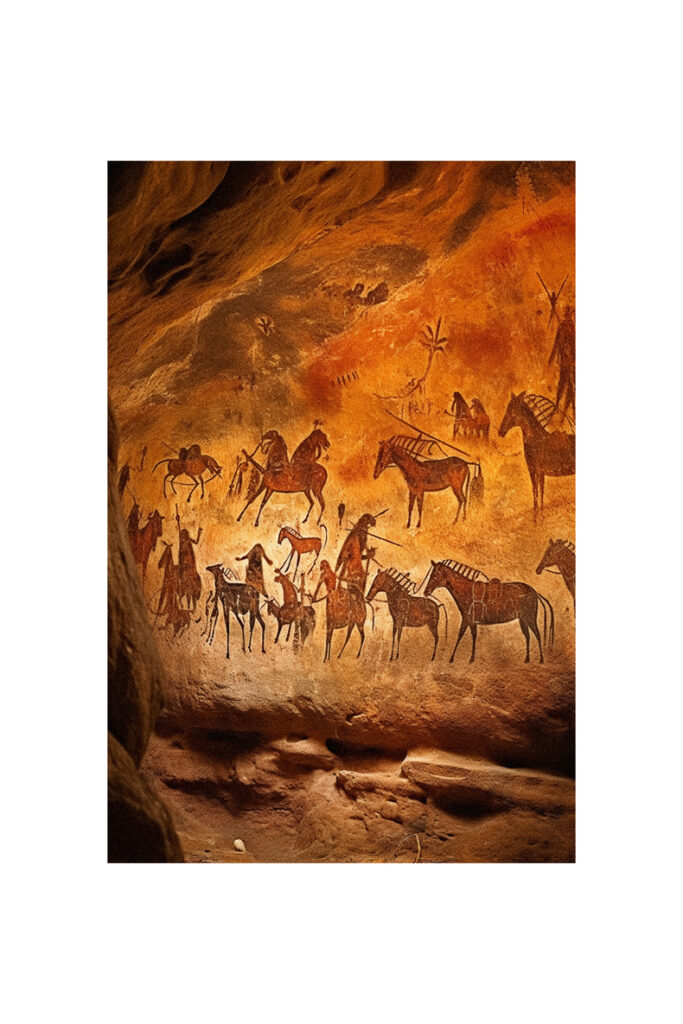
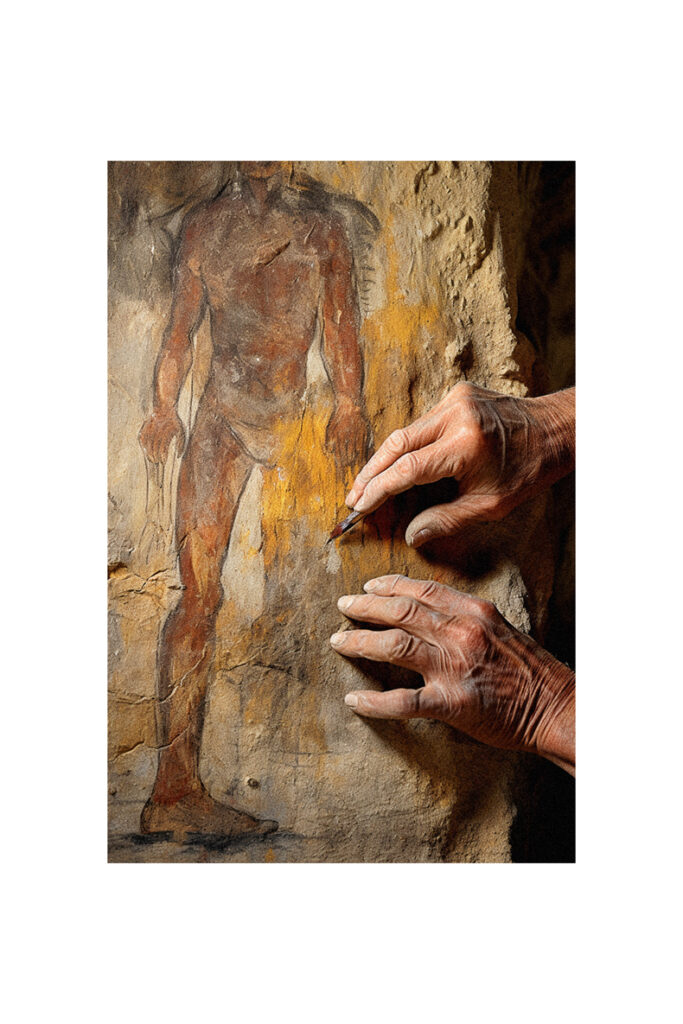
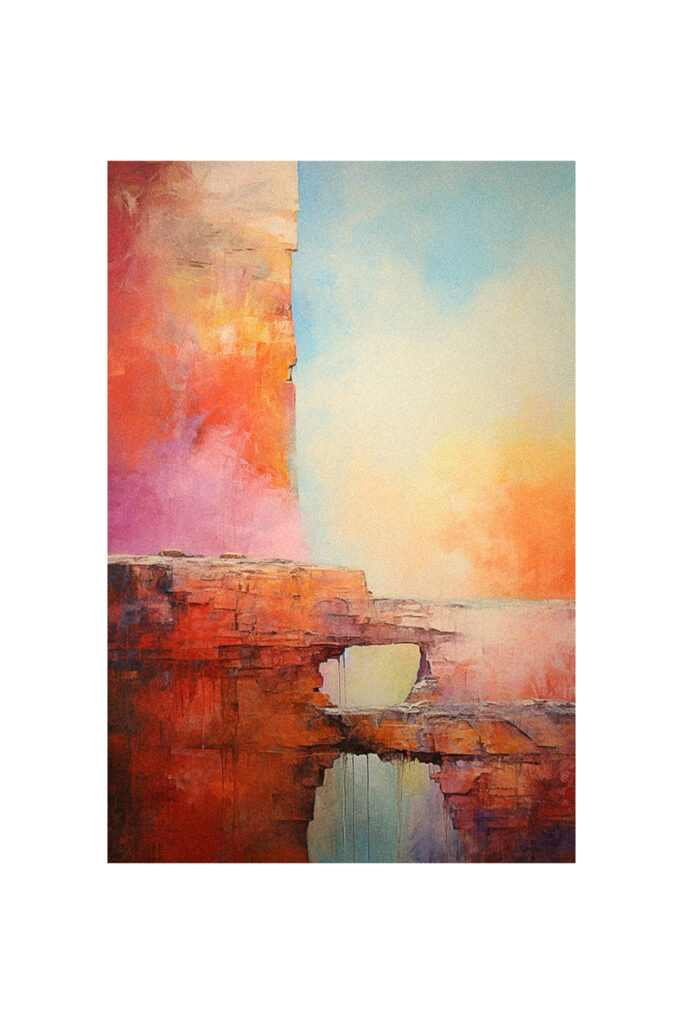
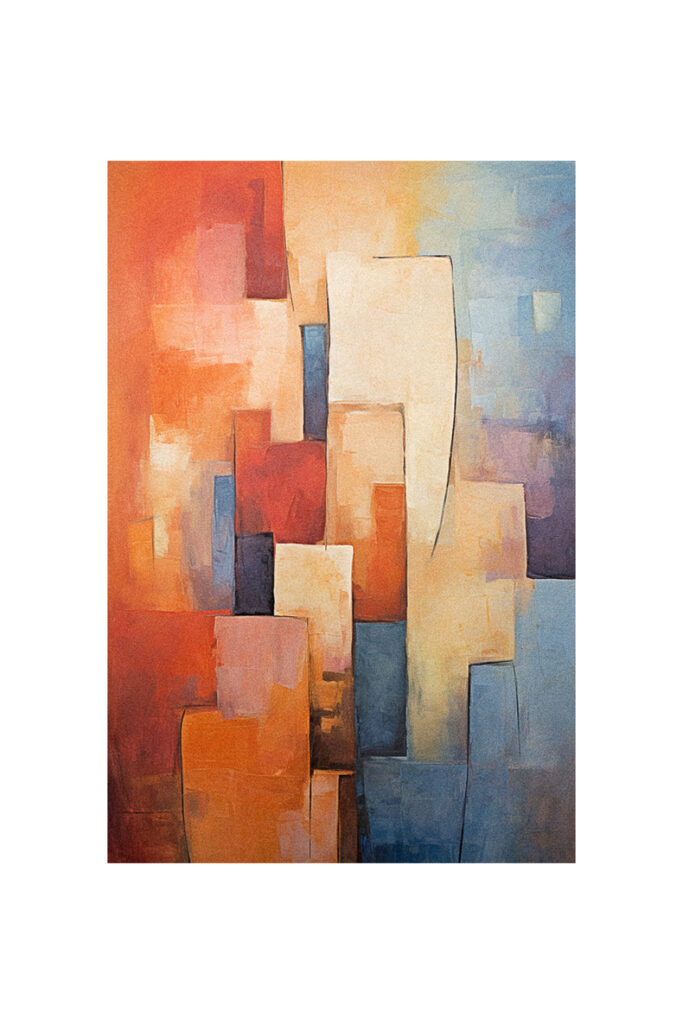
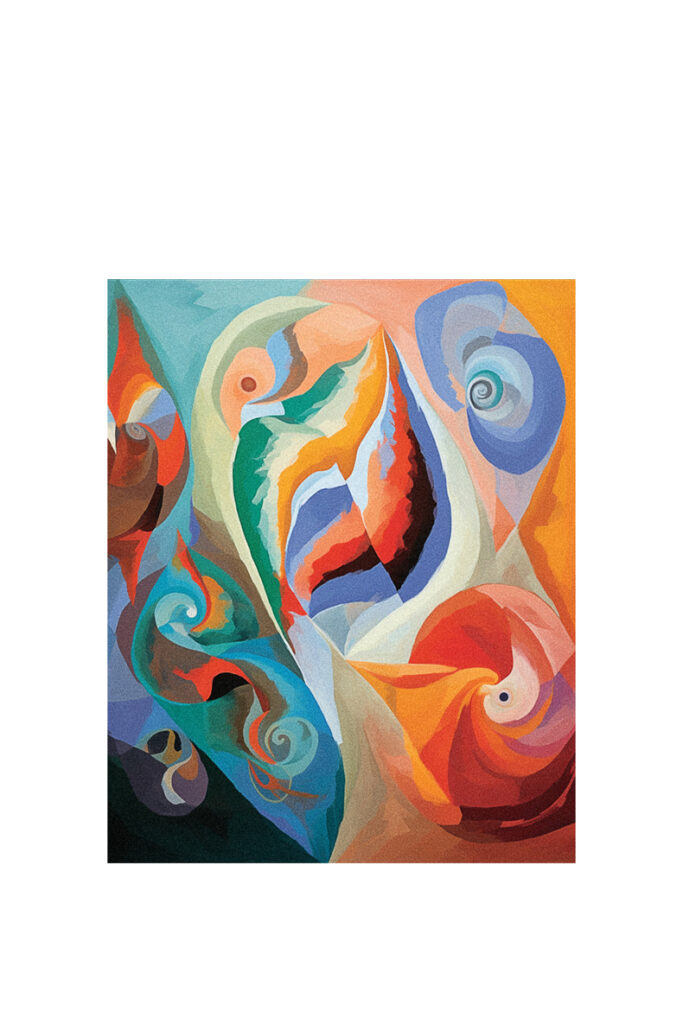
Prehistoric Art Beginnings
In tracing the evolution of painting methods, it is crucial to start from its primitive roots in prehistoric art, where nomadic populations used rudimentary materials such as charcoal to create their first representations on cave walls over 42,000 years ago. These early creators were Homo Neanderthal, who depicted their daily lives and diet through simple yet descriptive images.
The Cave of Nerja in Spain houses some of the oldest paintings discovered so far, providing invaluable insights into human history. The Rock Painting or Rock Art style was born within these sheltered caves and featured depictions of animals, plants, and objects with varying degrees of realism.
This marked the inception of painting as we know it today, setting a foundation for artistic expression and communication that would later evolve substantially across different epochs.
Neanderthal Artists
Remarkable findings from the Cave of Nerja in Spain revealed that Homo Neanderthals, not Homo Sapiens, were the first known artists, illustrating their daily life and diet over 42,000 years ago.
This archaeological discovery challenged previous theories about human evolution and artistic expression. The cave paintings depicted animals, plants, and objects with varying degrees of realism alongside abstract representations. Such depictions served as a form of communication for these early humans.
The artistry suggests an ability to understand symbolism and abstraction—an intellectual capacity previously attributed solely to Homo Sapiens. This evidence redefines our understanding of Neanderthal culture and cognitive abilities while shedding light on artistic expression’s ancient origins.
Cave of Nerja
Unearthed as a treasure trove of prehistoric artistry, the Cave of Nerja unveils powerful insights into the lives and cognitive abilities of Homo Neanderthals, pushing back the timeline of human creativity further than previously believed.
Located in Spain, this refuge for Neanderthals is home to some of the oldest paintings, over 42,000 years old, known to man.
The prominence of seals among these cave paintings suggests their importance in the Neanderthal diet. This discovery challenges previous beliefs about early humans’ artistic capabilities, showcasing their ability to depict daily life with varying degrees of realism.
Thus, it redefines our understanding not only of Homo Neanderthal but also the origins and early transformational phases in painting methods across human history.
Rock Painting: An Overview
Emerging as one of the earliest forms of artistic expression, rock art presents an insightful glimpse into our prehistoric ancestors’ lives, beliefs, and daily routines.
The advent of painting can be traced back to the nomadic people who used charcoal to create drawings on rocky walls. These paintings, found in sheltered caves such as the Cave of Nerja in Spain, depicted various subjects ranging from animals and plants to abstract representations.
These works showcase not just primitive men’s talent for visual representation but also their ability to use art as a tool for communication and documentation.
Rock painting thus marks a significant milestone in the evolution of human creativity, paving the way for further advancements in artistic techniques and mediums over millennia.
Art in Ancient Greece
Flourishing during the classical period, the art of ancient Greece exhibited a sophisticated blend of realism and idealism, wherein scenes from mythology and daily life were rendered with unprecedented detail on ceramic artifacts such as vases and pots.
This era also witnessed the birth of mural painting in Crete, which combined figurative styles with geometric designs to create vivid narratives.
Around the 11th century BC, Greek painters developed techniques for visual perspective and volumetric shading that allowed for more realistic representations. They used egg-based tempera, wax-based enamel, and parietal fresco to bring their visions to life.
These advancements significantly influenced Roman painting, leading to a rich dialogue between Eastern Mediterranean cultures that shaped Western art’s trajectory.
Mural Paintings in Crete
The Cretan murals, laden with rich narratives and a blend of figurative styles and geometric designs, reflect an era where art served as a vital medium for storytelling and cultural expression. These grand frescoes depict complex scenes from nature, religion, and society using vivid colors derived from natural pigments.
The artists of Crete demonstrated sophisticated painting techniques such as stucco relief and trompe l’oeil to create depth and perspective. Furthermore, they incorporated marine motifs that suggest the island’s close relationship with the sea.
These murals offer insights into Minoan civilization’s societal norms, religious beliefs, and daily activities. Therefore, the mural paintings in Crete serve as invaluable historical resources whilst demonstrating the evolution of painting methods over time.
Roman Artistic Influence
Influenced by Greek aesthetics yet uniquely distinct, Roman artistry introduced novel interpretations and compositions into the realm of visual arts, thereby enriching our understanding of ancient societies and cultures.
The Romans emphasized landscape and still life in their paintings, developing an exuberant and elegant style known as baroque. Their artworks were often showcased in architectural settings using various materials like fabric, wood, ivory, metal, stone, and canvas. Furthermore, they incorporated oriental and Egyptian art influences into their painting style.
An example is ‘The Consequences of War,’ 1637-38 by Rubens – a testament to Roman painting in the baroque style. This fusion of styles demonstrated Rome’s cultural diversity and laid the groundwork for subsequent European artistic movements.
Baroque Style Emergence
Emerging during the 17th century, the Baroque style marked a shift in artistic expression, emphasizing drama, movement, and grandeur; it reflected the turbulent times of religious conflict and revolutionary scientific discoveries.
Notable for its intricate details and strong contrasts between light and dark, this style was used to create a sense of awe and emotional intensity. This dynamic aesthetic found expression in paintings, architecture, and sculpture.
Artists such as Caravaggio, Rubens, and Rembrandt were this period’s leading figures. Their works exemplified Baroque’s unique characteristics: complex compositions filled with action, dramatic use of lighting, rich color palettes; realistic depictions that engaged viewers visually and emotionally – an embodiment of the era’s spirit.
Christian Impact on Art
Having examined the emergence and influence of the Baroque style, it is crucial to now turn attention towards another significant transformation in art history – the impact of Christianity. This religion’s ascendancy during late antiquity had profound implications for painting methods. Christian themes began dominating works, with artists focusing on biblical narratives and depictions of saints.
The abandonment of Greek references was a pivotal shift, marking a transition from antiquity to medieval painting. Early Christian art served as religious propaganda and influenced subsequent movements such as Renaissance, Neoclassicism, and Romanticism.
Art in the Medieval Times
Transitioning from the era of early Christian art, the medieval period marked a time of significant artistic development, with an estimated one-third of all artworks from this epoch centered around religious themes.
Medieval artists absorbed influences from the Eastern Roman Empire and Islamic cultures, resulting in diverse styles such as Byzantine, Romanesque, and Gothic art.
Paintings were often created on wooden panels or incorporated into manuscripts as illuminations. Artists used tempera paint from egg yolk and pigments to create vivid colors.
Using linear perspective was less common than in later periods; their spiritual significance often determined sizes. Thus, the transformation of painting methods during this era reflected cultural shifts towards religious devotion and influence from neighboring cultures.
Renaissance Artistic Revival
The period known as the Renaissance marked a profound revival of artistic interest and exploration, with notable advancements in perspective, naturalistic representation, and innovative techniques.
This epoch saw the development of linear perspective, an approach that creates depth and dimension on a flat surface, pioneered by Filippo Brunelleschi.
Artists such as Leonardo da Vinci and Michelangelo Buonarroti further expanded upon these innovations through detailed human anatomy studies and the implementation of chiaroscuro – a technique employing light and shadow to enhance three-dimensionality.
Oil painting also emerged during this time, offering greater flexibility for blending colors.
In summary, the transformation of painting methods during the Renaissance resulted in more realistic representations that have profoundly influenced subsequent generations of artists.
Mannerism in Art
Transitioning from the artistic revival of the Renaissance, a new stylistic period known as Mannerism emerged around 1520.
Mannerism, spanning until about 1600, was characterized by its focus on style and technique over naturalistic depiction. Artists of this era began experimenting with proportions, scale, and spatial harmony, resulting in artworks that often appeared exaggerated or distorted.
Elongated forms, complex poses, and a lack of clear perspective were standard features in Mannerist paintings. The movement saw artists such as Parmigianino and Tintoretto break away from the High Renaissance’s balanced compositions and realistic portrayals in favor of more abstract representations.
This shift reflected an increased focus on artistic virtuosity and innovation rather than adherence to naturalistic conventions.
Baroque Art Characteristics
Emerging in the late 16th century, Baroque art was characterized by its dramatic intensity, rich detail, and grandeur that aimed to stir emotions and captivate the viewers’ senses.
This artistic style originated in Italy and spread throughout Europe, profoundly influencing painting methods. The Baroque artists emphasized movement, color, and sensuality within their works. They manipulated light and shadow to create depth and volume, bringing a heightened sense of reality to their compositions.
Further defining this period were complex scenes filled with opulence and elaborate ornamentation. The Roman Catholic Church strongly supported this style as it effectively conveyed religious themes with emotional impact.
Thus, Baroque art significantly enriched historical painting techniques while reflecting societal shifts at that time.
Rococo Style’s Elegance
Transitioning from the grandeur and deeply religious themes of baroque art, the world of painting underwent another significant transformation in the 18th century with the advent of the Rococo style. Primarily emerging in France, Rococo was characterized by its lightness, elegance, and an emphasis on natural forms.
This artistic movement shifted from religious motifs to secular subjects such as love, leisure activities, and playful scenes. The color palette leaned towards soft pastels, creating delicate atmospheres within artworks. Furthermore, it introduced asymmetrical designs and intricate patterns that brought about an illusion of fluidity.
Notable artists like François Boucher and Jean-Honoré Fragonard contributed substantially to this style, making Rococo synonymous with refinement and sophistication in painting history.
Neoclassicism and Antiquity
Rooted in the reverence for classical antiquity, Neoclassicism blossomed as a stark contrast to the frivolous elegance of Rococo. Emerging in the mid-18th century, it was characterized by intellectual rigor, order, and idealized depictions drawn from ancient history and mythology.
The discovery of ancient civilizations in Athens and Naples sparked renewed interest in classical art forms. Artists like Jacques-Louis David brought this style to prominence with paintings emphasizing historical subject matter depicted with stoic heroism and moral virtue. They used clear lines, uncluttered composition, and intense colors to convey their themes.
Neoclassicism represented a return to disciplined formality after Rococo’s playful indulgence, thus embodying yet another significant transformation in painting methods throughout history.
Romanticism’s Individualism
In stark contrast to the disciplined formality of Neoclassicism, Romanticism, which arose in the late 18th century, championed individualism and emotion over reason and tradition. This movement reacted against the Industrial Revolution’s impact on society and embraced nature as a source of inspiration.
Romantic painters sought to evoke emotions through dramatic landscapes, passionate scenes, and supernatural elements. Their works often featured intense colors that strayed from realistic portrayals to emphasize emotional response. The technique’s loosening allowed for greater freedom in brushwork and color application. Notable artists such as J.M.W Turner and Eugène Delacroix embodied these principles, creating evocative art that broke away from classical ideals.
Thus, Romanticism significantly transformed painting methods by prioritizing emotion over precision.
Realism’s Life-like Depictions
Emerging in the mid-19th century, Realism embodied a stark departure from Romanticism’s emotional emphasis, instead striving to depict life as it truly was, unvarnished and devoid of idealization. Societal changes during the Industrial Revolution primarily drove this shift in painting methodology.
Artists like Gustave Courbet and Jean-François Millet sought to capture common folk in their everyday settings with meticulous detail, reflecting an ethos of egalitarian representation. Rejecting traditional themes of mythology and history, they focused on contemporary subjects often overlooked by high art.
The use of muted colors and careful observation reflected the harsh realities of life, creating a poignant commentary on society. Thus, Realism revolutionized painting methods with its faithful depiction of ordinary lives and landscapes.
Art Nouveau’s Natural Inspiration
Taking inspiration from the natural world, Art Nouveau aimed to break free from historical styles and create an entirely new aesthetic. This art movement that flourished between 1890 and 1910 introduced a unique style characterized by organic shapes, elegant designs, and intricate patterns.
The artists of this era sought to merge art with daily life, emphasizing craftsmanship over industrial mass production. They used flowing lines based on plant forms and often depicted women as sensual figures intertwined with nature. The bold use of color added to the vibrant energy of their works.
Prominent figures like Alphonse Mucha and Gustav Klimt played pivotal roles in shaping Art Nouveau’s distinct identity. This movement was a crucial stepping stone towards modernism in visual arts.
Impressionism’s Modern Subjects
Marking a radical departure from traditional art norms, Impressionism introduced an innovative approach that emphasized capturing fleeting moments and the transient effects of light on the landscape, often featuring modern subject matter such as urban scenes and leisure activities.
The movement, dominant in France during the late 19th century, challenged academic painting’s rigidity, emphasizing quickly rendered impressions using short brushstrokes to depict light’s changing qualities.
Artists like Claude Monet, Edgar Degas, and Pierre-Auguste Renoir broke convention by venturing outdoors to paint ‘en plein air’, capturing modern life’s immediacy.
Initially met with criticism for their unfinished appearance and unconventional themes, their works eventually transformed artistic practices globally by laying the groundwork for subsequent avant-garde movements.
Post-Impressionism’s Abstract Forms
Following the Impressionist era, Post-Impressionism was a pivotal artistic movement that concentrated on subjective emotions and symbolic content, often distilled into abstract forms and vibrant colors. Rejecting their predecessor’s focus on fleeting impressions of light and color, Post-Impressionists sought to evoke a deeper sense of structure and form.
Artists like Vincent van Gogh used bold brushstrokes and heightened colors to express emotional states, while Paul Cezanne aimed for solidity and permanence by painting with geometric precision. Georges Seurat introduced Pointillism, a meticulous method using tiny dots of pure color that blurred together when viewed from a distance.
These innovative techniques marked a significant departure from previous painting methods, paving the way for future abstract movements.
Surrealism’s Imagination Power
In a daring leap into the subconscious realm, Surrealism emerged as an artistic movement that championed the power of imagination, defying logical constructs and exploring dreamlike scenarios. Founded in the early 20th century by Andre Breton, Surrealism was inspired by Sigmund Freud’s psychoanalytic theories about dreams and unconscious desires.
Using techniques like automatism and frottage, artists painted illogical scenes with photographic precision, creating strange creatures from everyday objects and developing techniques that allowed the unconscious to express itself.
Salvador Dali is among the most celebrated surrealist painters known for his strikingly bizarre images. The transformation brought by Surrealism reshaped painting methods, profoundly influencing future art movements while challenging conventional norms.
Pop Art’s Mass Media Challenge
With a bold critique of consumer culture, Pop Art emerged as an influential movement in the mid-20th century, leveraging everyday objects and mass media imagery to create innovative works of art.
Prominent artists like Andy Warhol and Roy Lichtenstein utilized popular and commercial culture elements, effectively challenging traditional boundaries between ‘high’ and ‘low’ art. They replicated images from advertising, comic books, and mundane objects through techniques borrowed from the printing industry.
These methodologies included silkscreen printing and benday dots that mimicked industrial reproduction processes. Thus, Pop Art transformed painting methods by incorporating mechanical reproduction strategies to comment on the pervasive influence of mass media and consumerism in post-war society.
Arte Povera’s Everyday Materials
Moving from the commentary on consumerism and mass media highlighted by Pop Art, the evolution of painting methods took an unexpected turn with the advent of Arte Povera in Italy during the 1960s. This art movement rejected elitist materials and employed mundane, everyday objects to create thought-provoking artworks.
The term ‘Arte Povera,’ meaning ‘Poor Art,’ was coined by Italian art critic Germano Celant to define this new direction that emphasized simplicity and authenticity over material value. Artists like Mario Merz embraced this approach, using everyday items such as twigs, stones, or newspapers in their works.
Through Arte Povera, artists redefined what could be considered art materials and transformed traditional painting methods by integrating unconventional elements into their creations.
Minimalism’s Reaction to Extravagance
As a stark contrast to the embellishment and intricacy of previous art movements, Minimalism emerged in the 1960s as an aesthetic whisper amidst a cacophony of artistic expressions. This movement was characterized by simplicity, stripping works to their fundamental features. It aimed to eliminate any form of personal expression or narrative, focusing on anonymity and artwork’s materiality.
Artists like Frank Stella were early adopters of this style, creating paintings with repetitive geometric patterns devoid of emotional content. The transformation by Minimalism challenged traditional painting methods that relied heavily on representational subject matter and complex techniques. This bold shift marked a significant chapter in the history of painting and its evolution over time.
Contemporary Art’s Modern Perspectives
Emerging in the late 20th century, Contemporary Art has taken bold steps towards embracing new perspectives and challenging traditional boundaries. This art form utilizes innovative materials and technology to push the envelope of artistic expression. It aims to be a mirror for society, reflecting its complex issues such as identity, power structures, human rights, or environmental concerns.
A significant characteristic is the fusion of various disciplines like sculpture, photography, video, or performance. Painting methods have also been revolutionized; artists experiment with mixed media on canvas or create digital paintings on computers. These developments blur the line between high and low art forms, focusing on viewer engagement and interaction instead of just aesthetic appreciation.
Follow us on Pinterest for more tips, tutorials, and reviews for creatives!

